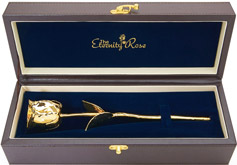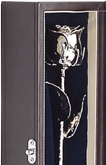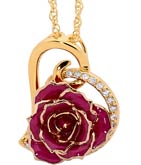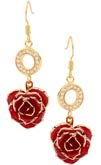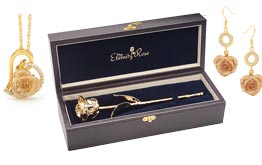What Creates a Spark? The Science of Attraction
Have you ever felt an immediate pull towards someone you cannot quite explain? It may feel like magic, but there is a fascinating science behind this spark, driven by biology, unconscious signals, and psychological alignment that draws two people towards one another.
Here is what research reveals about what truly creates attraction:
Subtle Chemical Signals and Scent
While it is unclear whether humans produce pheromones in the same way animals do, some studies suggest that subtle scent signals can indicate genetic compatibility, creating feelings of ease or intrigue without conscious awareness. If these signals play a role in humans, they may influence feelings of comfort or attraction at a subconscious level.
Dopamine and the Brain’s Reward System
Research on the neurochemistry of love shows that early-stage attraction activates your brain’s reward circuits, triggering dopamine, a chemical linked to motivation and pleasure. This is why:
- You feel energised and focused around someone you find attractive.
- Spending time with them feels rewarding and leaves you wanting more.
- Trying new activities together can heighten attraction by boosting dopamine.
Oxytocin, Affection, and Emotional Security
Physical closeness, affectionate gestures, and sustained eye contact stimulate the release of oxytocin, known as the “bonding hormone”. This hormone which is also involved in the neurochemistry of love described above:
- Enhances trust and warmth.
- Creates emotional security and closeness.
- Deepens bonds, allowing attraction to develop into attachment.
Mirroring and Nonverbal Connection
The sense of “clicking” with someone often comes from nonverbal attunement:
- Matching body language and speech patterns.
- Sharing subtle facial expressions and micro-moments of connection.
- Falling into an easy conversational rhythm.
This synchrony, driven by mirror neurons, creates a feeling of safety and being understood, strengthening the bond during interactions.
Psychological Alignment
Beyond physical chemistry, attraction also stems from psychological connection:
- Shared values and interests build familiarity and comfort.
- Complementary qualities, like calmness meeting energy, create a dynamic connection.
- Feeling emotionally understood fosters deeper attraction.
Psychological compatibility is often what helps attraction evolve into a meaningful and lasting connection.
Proximity and Familiarity
The “mere exposure effect” suggests that consistent interaction increases attraction:
-Seeing someone regularly builds familiarity and comfort.
- Small, positive exchanges accumulate over time, reinforcing a sense of connection.
This is why chemistry often grows naturally when you spend relaxed, consistent time with someone.
Novelty and Shared Experiences
Trying new activities or environments together can enhance attraction by boosting arousal and dopamine:
- Emotionally engaging or high-energy situations can make your connection feel more exciting.
- Shared novelty creates a sense of adventure, building closeness.
While constant excitement is not necessary, occasional novelty strengthens chemistry in relationships.
Putting It All Together
Chemistry is more than a spark; it is a layered interaction of hormones, brain systems, unconscious signals, and psychological connection:
- Dopamine fuels desire and excitement.
- Mirror neurons help you attune to one another.
- Oxytocin builds trust and closeness.
- Psychological alignment deepens the connection.
- Proximity and shared experiences nurture chemistry over time.
While you cannot force chemistry, you can foster an environment where it naturally develops by:
- Being present and open.
- Encouraging trust and emotional safety.
- Allowing your authentic self to be seen.
Final Reflection
When you feel that spark with someone, it is your brain, body, and emotions aligning to signal a meaningful connection. By understanding the science behind chemistry, you can recognise when it is worth nurturing into a relationship that is real and lasting.









